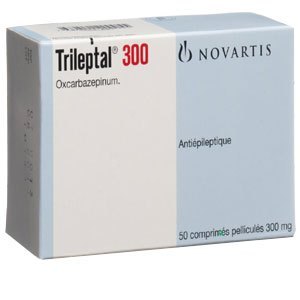TPS (Inj.)
৳ 70.00
Indications
- As the sole anesthetic agent for brief (15 minutes) procedures,
- For induction of anesthesia prior to administration of other anesthetic agents,
- To supplement regional anesthesia,
- To provide hypnosis during balanced anesthesia with other agents for analgesia or muscle relaxation,
- For the control of convulsive states during or following inhalation anesthesia, local anesthesia, or other causes,
- In neurosurgical patients with increased intracranial pressure, if adequate ventilation is provided, and
- For narcoanalysis and narcosynthesis in psychiatric disorders.
Therapeutic Class
Pharmacology
Thiopental binds at a distinct binding site associated with a Cl– ionopore at the GABAA receptor, increasing the duration of time for which the Cl– ionopore is open. The post-synaptic inhibitory effect of GABA in the thalamus is, therefore, prolonged.
Dosage & Administration
Premedication: Premedication usually consists of atropine or scopolamine to suppress vagal reflexes and inhibit secretions. In addition, a barbiturate or an opiate is often given. Ideally, the peak effect of these medications should be reached shortly before the time of induction.
Test dose: It is advisable to inject a small “test” dose of 25 mg to 75 mg of Thiopental Sodium for Injection to assess tolerance or unusual sensitivity to Thiopental Sodium for Injection, and pausing to observe patient reaction for at least 60 seconds. If unexpectedly deep anesthesia develops or if respiratory depression occurs, consider these possibilities: (1) the patient may be unusually sensitive to Thiopental Sodium for Injection, (2) the solution may be more concentrated than had been assumed, or (3) the patient may have received too much.
Use in anaesthesia: Normal dosage for the induction of anesthesia is 100 mg to 150 mg injected over 10 to 15 seconds. If necessary, a repeat dose of 100 mg to 150 mg may be given after one minute. No fixed dosage recommendations for the intravenous injection can be given, since the dosage will need to be carefully adjusted according to the patient’s response. Factors such as age, sex, and weight of the patient should be taken into consideration. Thiopental Sodium reaches effective concentrations in the brain within 30 seconds and anesthesia is normally produced within one minute of an intravenous dose.
- Adult: 100 mg to 150 mg intravenously over 10 to 15 seconds, normally as a 2.5% w/v solution. A repeat dose of 100 mg to 150 mg may be given after one minute. The intravenous injection should be given slowly and the amount given titrated against the patient’s response to minimize the risk of respiratory depression or the possibility of over dosage. The average dose for an adult of 70 kg is roughly 200 mg to 300 mg (8 mls to 12 mls of a 2.5% w/v solution) with a maximum of 500 mg.
- Children: 2 mg/kg to 7 mg/kg bodyweight, intravenously over 10 to 15 seconds, normally as a 2.5% w/v solution. A repeat dose of 2 mg/kg to 7 mg/kg may be given after one minute. The dose is 2 mg/kg to 7 mg/kg based on the patient’s response. The dose for children should not exceed 7 mg/kg.
- Elderly: Smaller adult doses are advisable.
Use in convulsive states: 75 mg to 125 mg (3 mls to 5 mls of a 2.5% w/v solution) should be given as soon as possible after the convulsion begins. Further doses may be required to control convulsion following the use of a local anesthetic. Other regimens, such as the use of intravenous or rectal diazepam, may be used to control convulsive states.
Interaction
Contraindications
- Absence of suitable veins for intravenous administration
- Hypersensitivity (allergy) to barbiturates
- Variegate porphyria (South African) or acute intermittent porphyria
- Status asthmaticus
Relative Contraindication:
- Severe cardiovascular disease
- Hypotension or shock
- Conditions in which the hypnotic effect may be prolonged or potentiated, eg, excessive premedication, Addison’s disease, hepatic or renal dysfunction, myxedema, increased blood urea, severe anemia, asthma, myasthenia gravis
Side Effects
Pregnancy & Lactation
Precautions & Warnings
This product may be habit forming. Keep resuscitative and endotracheal intubation equipment and oxygen readily available. Maintain patency of the airway at all times. Only persons qualified in the use of anesthetics should administer this drug. Avoid extravasations or intra-arterial injection.






Reviews
There are no reviews yet.